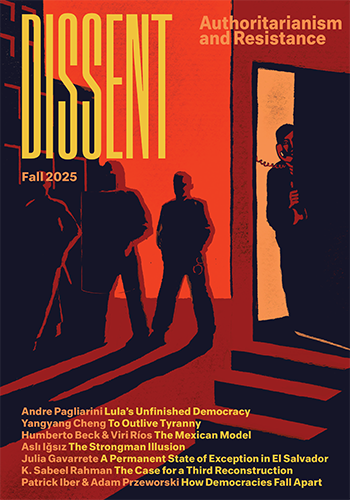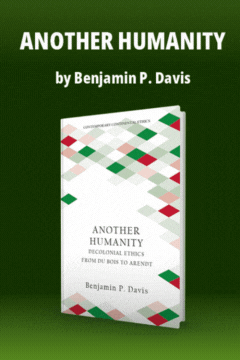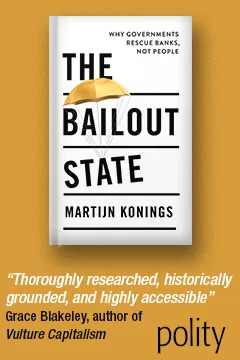American Violence from Baltimore to Baghdad
American Violence from Baltimore to Baghdad

This article originally appeared at the Bulletin of Atomic Scientists.
The choice of weapons is important because it radically affects what we are, and at stake in that choice is the risk of losing our soul. —Grégoire Chamayou
I was reading the book A Theory of the Drone by the French philosopher Grégoire Chamayou when I heard that yet another American black man had been killed by a white police officer, this time in South Carolina. Actually, “killed” is too generic a word. In the video of the incident, the police officer leans forward a little, raises his gun to eye level to make his aim more precise, and shoots Walter Scott in the back as he runs away. Scott was executed. Anyone who has watched the video, which was taken by a bystander, can only be disturbed by the professional methodical coldness with which Scott is taken out with eight bullets.
It is the same professional methodical coldness with which the drone operator kills. In his book, Chamayou argues that assassination, combat, and law enforcement have become jumbled together in U.S. counterinsurgency programs. He wants to re-separate them. He points out that the Obama administration has defended drone strikes as justified by both the laws of war and the norms of law enforcement, even though the legal frameworks regulating war and policing are quite different, indeed often opposed. Under the laws of war, combatants are excused from the usual prohibition against killing, but on condition that they kill in carefully circumscribed ways. The killing is of and by combatants, and must take place in a declared war zone, within which soldiers are free to kill their enemy counterparts at will, even shooting them in the back, unless the target is trying to surrender. Those engaged in law enforcement, on the other hand, can hunt criminals more freely across space, but killing them is considered a last resort, justified only by exceptional circumstances. Quoting UN Special Rapporteur Philip Alston, Chamayou writes that in law enforcement, “the use of lethal force should remain the exception … it is permissible only if it is the sole available means in the face of a threat that is ‘instant, overwhelming, and leaving no choice of means, and no moment for deliberation.’”
Whichever set of norms the United States chooses, according to Chamayou, U.S. drone strikes are illegal. The civilian CIA employees killing people in Yemen, Pakistan, and Somalia, countries against which the United States has not declared war, are violating the laws of war: They are not combatants and they are killing outside a warzone. At the same time, given that drones can only kill their targets or let them go free, the personnel operating them are violating the fundamental axiom of law enforcement that one apprehend suspects with the least possible amount of force, killing only in exceptional circumstances.
In its use of drones for counterinsurgency, then, the United States has melded the paradigms of war and law enforcement to its convenience and given itself an overly generous license to kill. Meanwhile at home, U.S. domestic police forces are also increasingly integrating the paradigms of law enforcement and counterinsurgency with the result that people like Scott, stopped for a tail-light violation, end up dead. According to the New York Times, under a program that transfers military equipment to local law enforcement, U.S. police departments—often serving communities of less than 100,000—have since 2006 taken possession of $4.3 billion worth of military equipment, including over 800 armored vehicles, 50,000 night-vision pieces, 94,000 machine guns, and 530 airplanes and helicopters. Over 100 campus police departments have also taken military equipment, including grenade launchers. Montgomery County, Texas, bought a drone it wants to equip with tasers and rubber bullets. While in the past only major cities had SWAT teams, now 80 percent of U.S. towns with populations between 25,000 and 50,000 have them, and there are 50,000 SWAT team raids a year in the United States. Some raids that have made the news have been on barber shops and animal shelters guilty of code violations. (To see how absurd this has become, watch this police force recruitment video for Springdale, Arkansas, population 70,000, playing up its SWAT team.)
U.S. policing, in other words, is increasingly seen by the police themselves as a form of counterinsurgency, designed to control hostile populations whose lives lack value. As if they were operating in Iraq or Afghanistan, U.S. police infiltrate and spy on adversary networks, stop and search people at will, and bust down doors in the middle of the night with guns drawn. Recently the Guardian revealed that Chicago has been operating “the domestic equivalent of a CIA black site”—a detention facility where arrestees, some of them minors, are held off the books, with no recourse to legal advice, and are often shackled for long periods and even beaten during interrogation. Just as U.S. soldiers have killed hundreds of Iraqi civilians for not stopping at checkpoints—which are often poorly marked—so Scott lost his life for running away from a traffic stop.
For people of color and the poor, the United States is becoming a war zone. Anyone skeptical should consider the numbers. Estimates of how many insurgent and civilian foreigners the United States has killed by drone vary; the highest estimate, roughly 5,241 over 13 years, comes from the Bureau of Investigative Journalism. That is 403 deaths a year. In the United States, a recent government report revealed that over eight years (2003 through 2009 plus 2011), police killed an average of 928 people each year. That’s more than twice as many as the highest estimate of drone deaths in Pakistan, Yemen, Somalia, and Afghanistan combined. (Details of individual deaths can be found at Killedbypolice.net.)
The four American security contractors working for Blackwater Worldwide, who were just sentenced by a U.S. federal judge for randomly killing 14 innocent civilians in Baghdad, claimed to be acting in self-defense, until their story broke down. Likewise, after North Charleston, South Carolina police officer Michael Slager shot Scott in the back as he ran away, Slager reported that they had struggled and that he was acting in self-defense. Had a witness not made a video of Slager shooting Scott in the back as he ran away, we would not have known the truth.
But the people at ground zero, African-Americans at home and Muslims abroad, don’t need videos to know the truth. The truth is that the American deployment of violence has gone badly off the rails. Violence is always described in carefully crafted official statements as discriminate or unavoidable; wrongful deaths as regrettable and unusual errors of judgement. The truth, though, is that violence is now often the first resort. Acting under cover of law, weaponized Americans have become a lawless force.
Another French philosopher, Michel Foucault, argued that imperial powers experiment with new techniques of social control in their colonies and then use them at home. Iraq, Afghanistan, and Pakistan have become laboratories for new techniques of order and control that, it is now clear, have definitively failed. Chamayou quotes the Pakistani Taliban leader Baitullah Mehsud as saying, “I spent three months trying to recruit and got only 10 to 15 persons. One U.S. attack and I got 150 volunteers.” David Kilcullen, Gen. David Petraeus’ special adviser on counterinsurgency, made the same point in 2009 testimony to Congress: “The drone strikes are highly unpopular. They are deeply aggravating to the population. And they’ve given rise to an anger that coalesces the population around the extremists.”
When counterinsurgency fails, we can leave Iraq and Afghanistan. But we cannot leave Ferguson, Missouri and all the other American cities like it, where racially vindictive, militarized policing is costing the authorities what counterinsurgency theorists have always identified as the prize: the hearts and minds of communities. When entire communities believe that their lives do not matter to the state, the nation is in peril.
Hugh Gusterson is a professor of anthropology and international affairs at George Washington University. His expertise is in nuclear culture, international security, and the anthropology of science. He has written two books on the culture of nuclear weapons scientists and antinuclear activists: Nuclear Rites: A Weapons Laboratory at the End of the Cold War (University of California Press, 1996) and People of the Bomb: Portraits of America’s Nuclear Complex (University of Minnesota Press, 2004).






